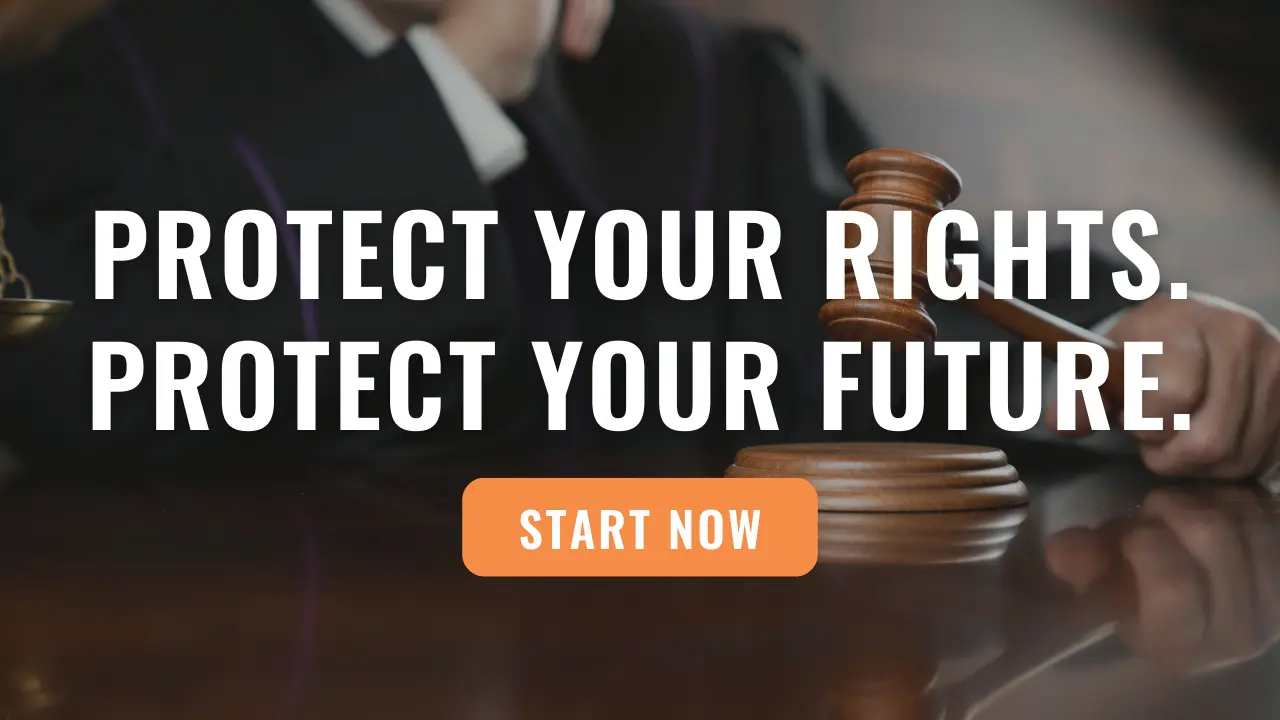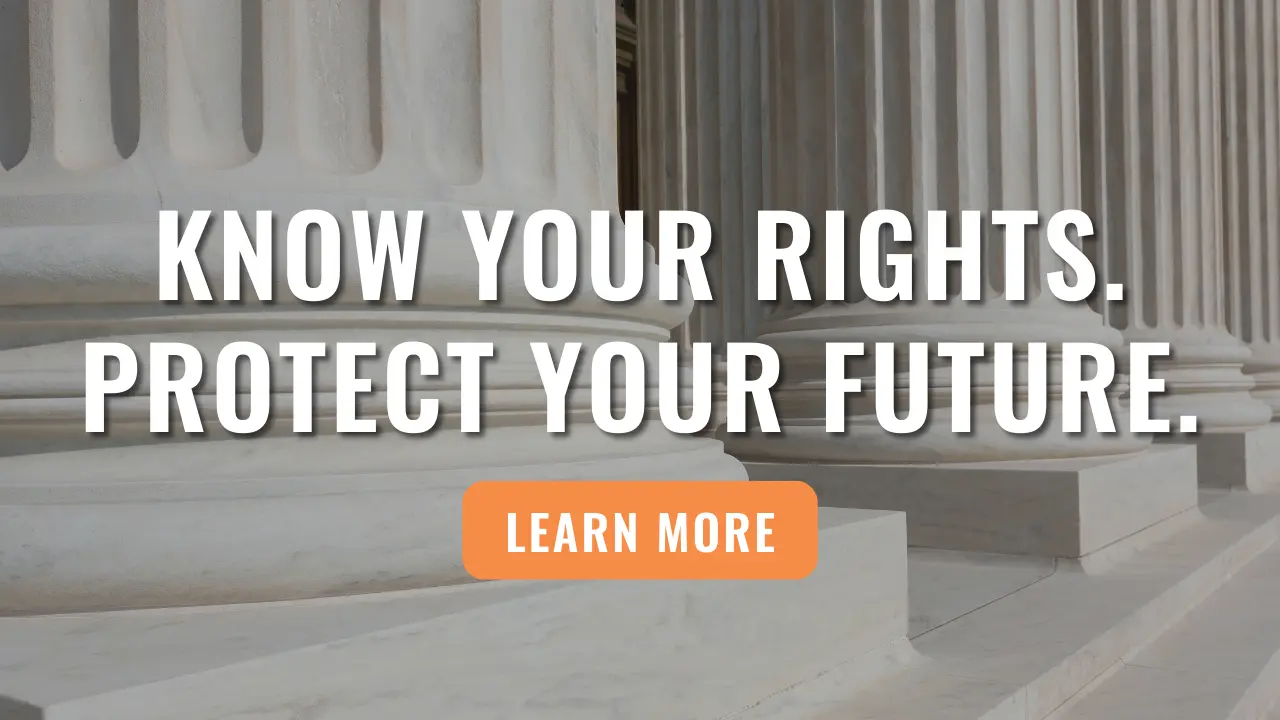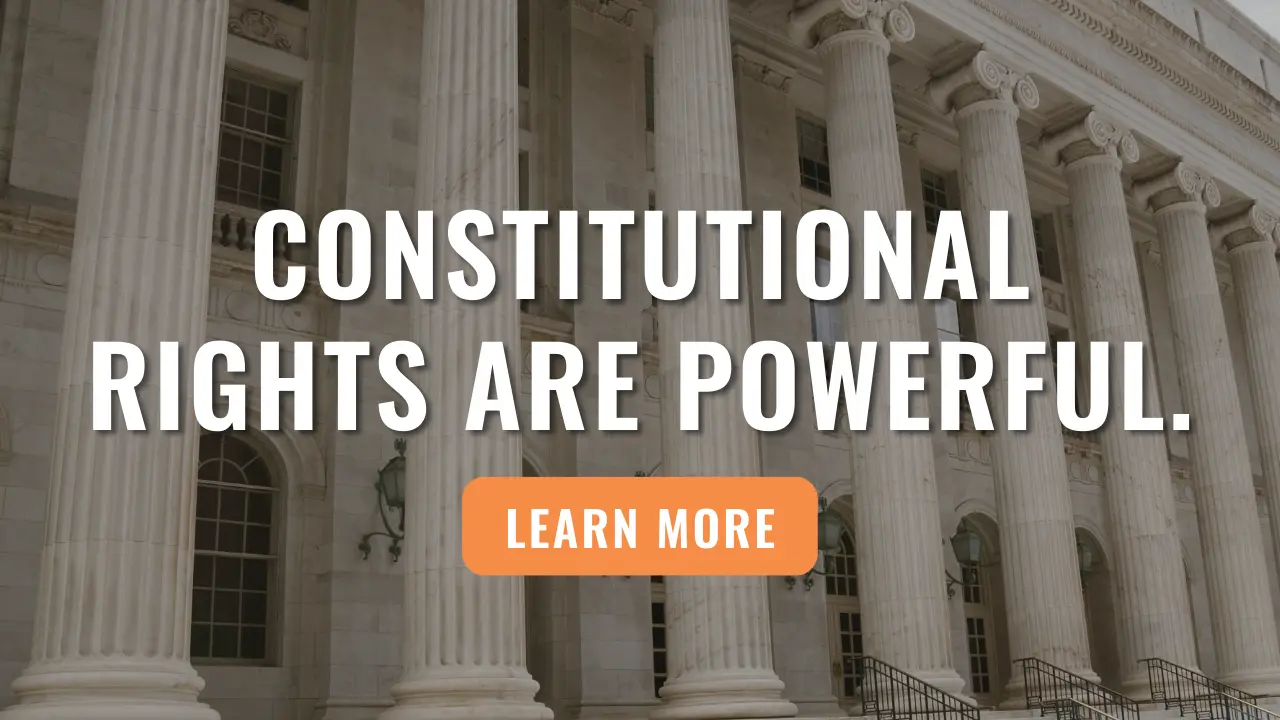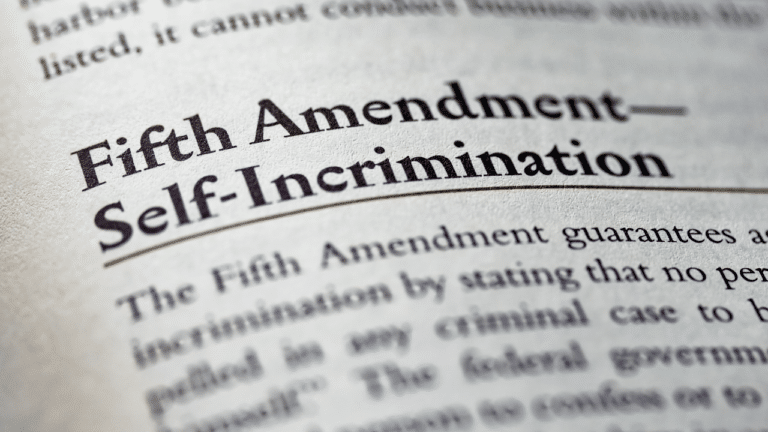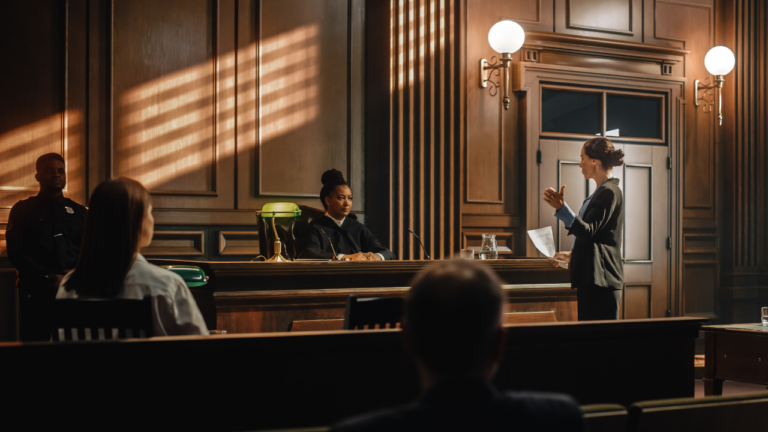
The Fourth Amendment to the United States Constitution protects the right of people to be secure in their persons, houses, papers, and effects against unreasonable searches and seizures. A “search” compromises individual interests in privacy, while a “seizure” deprives the individual of dominion over his or her person or property.
The Fourth Amendment warrant requirement is subject to certain exceptions. For example, the exigent circumstances exception applies when the exigencies of a situation make the needs of law enforcement so compelling that a warrantless search is objectively reasonable. It enables law enforcement officers to handle emergency situations that present a compelling need for official action, without time to secure a warrant. Officers may also make warrantless entry into a home in hot pursuit of a suspect, or if there is a need to prevent physical harm to the offender and the public.
While searches and seizures inside a home without a warrant are presumptively unreasonable, warrantless searches and seizures of automobiles and persons in public places may be reasonable under many circumstances.
WHAT IS THE TEXT OF THE FOURTH AMENDMENT TO THE UNITED STATES CONSTITUTION?
U.S. Const. Amend. IV. SEARCHES AND SEIZURES; WARRANTS.
The right of the people to be secure in their persons, houses, papers, and effects, against unreasonable searches and seizures, shall not be violated, and no Warrants shall issue, but upon probable cause, supported by Oath or affirmation, and particularly describing the place to be searched, and the persons or things to be seized.
WHAT IS THE BACKGROUND AND CONTEXT OF THE FOURTH AMENDMENT IN THE BILL OF RIGHTS?
The right to be free from unreasonable searches and seizures has its roots in English history.
The Framers of the U.S. Constitution, including John Adams, Thomas Jefferson, and James Madison, recognized the importance of protecting individual liberties from government intrusion. Their intention, made clear by the Preamble, was to “form a more perfect Union, establish Justice, insure domestic Tranquility, provide for the common defense, and promote the general Welfare.”
To assuage the Democratic-Republicans and Anti-Federalists, framer James Madison drafted the first ten constitutional amendments, known as the Bill of Rights, based on the desire to avoid another tyrannical government they had fought so hard against. The Federalist party secured the ratification of the U.S. Constitution by promising the addition of amendments codifying fundamental liberties outlined in the Bill of Rights.
The Bill of Rights guarantees fundamental freedoms often restrained by despotic, oppressive governments. It encompasses “the great rights” such as the 6th amendment and 7th amendment right to trial by jury, the first amendment freedom of the press, the 2nd amendment right to keep and bear arms, and the 4th amendment right to be free from unreasonable government searches and seizures. They are considered the “choicest privileges of the people” in the United States, and are protected from government overreach.
The first ten amendments were proposed to several state legislatures by the First Congress on September 25, 1789. New Jersey was the first State to ratify the Bill of Rights on November 20, 1789, followed by Maryland, North Carolina, South Carolina, New Hampshire, Delaware, Pennsylvania, New York, and Rhode Island in 1790. Vermont and Virginia ratified the Bill of Rights in 1791, resulting in its adoption. The Legislatures of Connecticut, Georgia, and Massachusetts held out on ratification until 1939.
WHAT IS THE HISTORICAL ORIGIN OF THE FOURTH AMENDMENT TO THE UNITED STATES CONSTITUTION?
The Fourth Amendment to the Constitution of the United States was included in the Bill of Rights as a protection against oppressive government practices of intruding into a person’s home without probable cause.
The Act of Frauds of 1696 extended the board enforcement powers in the 1662 Act to customs officers in the colonies, authorizing the officers to conduct warrantless searches at their discretion. The 1662 Act also authorized British revenue officers to use writs of assistance to search homes in Colonial America for smuggled goods. James Otis pronounced this practice “the worst instrument of arbitrary power, the most destructive of English liberty and the fundamental principles of law, that ever was found in an English law book.” Boyd v. U.S., 116 U.S. 616, 625 (1886).
The Founding generation crafted the Fourth Amendment as a “response to the reviled ‘general warrants’ and ‘writs of assistance’ of the colonial era, which allowed British officers to rummage through homes in an unrestrained search for evidence of criminal activity.” Riley v. California, 573 U.S. 373, 403 (2014). John Adams recalled James Otis’s 1761 speech condemning writs of assistance as “the first act of opposition to the arbitrary claims of Great Britain” and helped spark the Revolution itself. Id. (quoting 10 Works of John Adams 248 (C. Adams ed. 1856)); Carpenter v. U.S., 138 S.Ct. 2206, 2213 (2018).
For much of U.S. history, Fourth Amendment search doctrine was “tied to common-law trespass” and focused on whether the Government “obtains information by physically intruding on a constitutionally protected area.” United States v. Jones, 565 U.S. 400, 405, 406, n. 3 (2012). More recently, the United States Supreme Court has recognized that “property rights are not the sole measure of Fourth Amendment violations.” Soldal v. Cook County, 506 U.S. 56, 64 (1992).
In Katz v. United States, the Supreme Court established that “the Fourth Amendment protects people, not places,” and expanded our conception of the Amendment to protect certain expectations of privacy as well. When an individual “seeks to preserve something as private,” and his expectation of privacy is “one that society is prepared to recognize as reasonable,” we have held that official intrusion into that private sphere generally qualifies as a search and requires a warrant supported by probable cause. Smith v. Maryland, 442 U.S. 735, 740 (1979).
Although no single rubric definitively resolves which expectations of privacy are entitled to protection, the analysis is informed by historical understandings “of what was deemed an unreasonable search and seizure when [the Fourth Amendment] was adopted.” Carroll v. United States, 267 U.S. 132, 149 (1925). On this score, our cases have recognized some basic guideposts. First, that the Amendment seeks to secure “the privacies of life” against “arbitrary power.” Boyd v. United States, 116 U.S. 616, 630 (1886). Second, and relatedly, that a central aim of the Framers was “to place obstacles in the way of a too permeating police surveillance.” United States v. Di Re, 332 U.S. 581, 595 (1948).
WHAT IS A SEARCH UNDER THE FOURTH AMENDMENT TO THE UNITED STATES CONSTITUTION?
The Fourth Amendment protects against unreasonable searches and seizures by the government, but government actions constituting a “search” have been broadly interpreted. A “search” occurs for purposes of the Fourth Amendment when the government obtains information by an unreasonable physical intrusion on a person’s houses, papers, or effects. In other words, a Fourth Amendment search occurs when the government violates a subjective expectation of privacy that society recognizes as reasonable.
Along those lines, a search does not occur—even when the explicitly protected location of a house is concerned—unless the individual manifested a subjective expectation of privacy in the object of the challenged search, and society is willing to recognize that expectation as reasonable. This means that a person may consent to a search of any protected place.
What is reasonable suspicion?
Officers conducting an investigatory stop must have reasonable suspicion, or some objective manifestation that the person stopped is, or is about to be, engaged in criminal activity. Reasonable suspicion is a particularized and objective basis for suspecting legal wrongdoing, based on the totality of the circumstances. Officers may draw on their own experience and specialized training to make inferences from and deductions about the cumulative information available to them. An officer’s reliance on a mere “hunch” is insufficient to justify a stop. The likelihood of criminal activity need not rise to the level of probable cause, and it falls short of a preponderance of the evidence standard.
For example, in Kansas v. Glover, a Kansas deputy sheriff ran a license plate check on a pickup truck, discovering that the truck belonged to the defendant, and that the defendant’s license had been revoked. The deputy stopped the truck because he assumed the defendant was driving. The defendant was in fact driving, and was charged with driving as a habitual violator. He argued that the officer lacked reasonable suspicion because he did not know with certainty that the defendant was the driver with the revoked license. The Court held the officer used commonsense judgments and inferences about human behavior, and determined it was likely the registered owner was driving.
Reasonable suspicion depends on the factual and practical considerations of everyday life on which reasonable and prudent men, not legal technicians, act. Officers are permitted to make common sense judgments and inferences about human behavior, and the reasonable suspicion standard takes into account the totality of the circumstances.
What is a pat down or “Terry stop and frisk”?
A Terry stop and frisk, or an investigative detention and pat down, is a brief seizure and minimally intrusive search supported by reasonable suspicion that criminal activity may be afoot. The U.S. Supreme Court ruled in Terry v. Ohio that a police officer may stop a suspect on the street and frisk him or her without probable cause to arrest, if the police officer has a reasonable suspicion that the person has committed, is committing, or is about to commit a crime and has a reasonable belief that the person “may be armed and presently dangerous.” The goal of the detention and pat down is to dispel the officer’s reasonable suspicions, and may not exceed the scope thereof.
What is a valid search warrant?
Where a search is undertaken by law enforcement officials to discover evidence of criminal wrongdoing, reasonableness generally requires them to obtain a judicial warrant. Such a warrant ensures the inferences to support a search are drawn by a neutral and detached magistrate instead of being judged by the officer engaged in the often competitive enterprise of ferreting out crime. In the absence of a warrant, a search is only reasonable if it falls within a specific exception to the warrant requirement.
A valid search warrant is supported by probable cause, and particularly describes the place to be searched and the persons or things to be seized. The issuing magistrate makes a practical, common-sense decision regarding whether, given all the circumstances set forth in the affidavit, including the veracity and the basis of knowledge of persons supplying hearsay information—there is a fair probability that contraband or evidence of a crime will be found in a particular place.
What is probable cause?
The United States Supreme Court has long held that the probable-cause standard is incapable of precise definition or quantification, because it deals with probabilities and depends on the totality of the circumstances. The substance of all definitions of probable cause is a reasonable ground for belief of guilt, and that believe of guilt must be particularized with respect to the person to be searched or seized.
Courts assessing whether an officer had probable cause to arrest an individual examine the events leading up to the arrest, and decide whether the historical facts, viewed from the standpoint of an objectively reasonable police officer, amount to probable cause.
In Maryland v. Pringle, the defendant was a passenger in a vehicle stopped for speeding with two other men at 3:16 a.m. When the driver opened the glove box directly in front of the defendant, the officer saw $763 of rolled-up cash. The driver consented to a search, which revealed five baggies of cocaine behind the backseat, accessible to all three men. All three failed to offer any explanation regarding the cocaine and money, and were arrested for the drugs. The U.S. Supreme Court upheld the defendant’s arrest based on probable cause to believe he, as well as the two other men, were committing drug possession in his presence.
In Illinois v. Gates, the police received a handwritten anonymous letter in the mail alerting them that the defendant and his wife were selling drugs. Police corroborated details in the letter through surveillance, but failed to give sufficient information in the warrant application. They secured a warrant nonetheless, searched the defendants’ home and car, and found drugs. The U.S. Supreme Court held that although the anonymous letter by itself did not supply probable cause for the warrant, police were permitted to rely on it in good faith when they searched the defendants’ home and car. The Court noted there was likely probable cause in this case, but the police did not state it in the affidavit.
Is thermal-imaging of a home a “search” under the Fourth Amendment?
Yes. Founding-era understandings guide the application of the Fourth Amendment to innovations in surveillance tools. As technology has enhanced the Government’s capacity to encroach upon areas normally guarded from inquisitive eyes, American courts seek to assure preservation of that degree of privacy against government that existed when the Fourth Amendment was adopted. Kyllo v. United States, 533 U.S. 27, 34 (2001).
In Kyllo v. United States, law enforcement agents used a thermal-imaging device to scan the defendant’s triplex to determine if the amount of heat emanating from it was consistent with the high-intensity lamps used for indoor marijuana growth. The Supreme Court conducted a “mechanical interpretation” of the Fourth Amendment, and held that use of a thermal imager to detect heat radiating from the side of the defendant’s home was a search. Id. at 35. The Government cannot, without a warrant, capitalize on sense-enhancing technology to explore what happens within the home. Any other conclusion would leave homeowners “at the mercy of advancing technology.”
Can police fly over private property?
Although it depends on the facts and circumstances, the Fourth Amendment protection does not generally shield open fields and aerial views of one’s home and curtilage by law enforcement. However, police officers using visual enhancement technology to get a closer view of a person’s home and curtilage may implicate the Fourth Amendment.
In California v. Ciraolo, police received an anonymous tip that the defendant was growing marijuana in his backyard. Police used a private plane to fly over the defendant’s home from 1,000 feet high (within navigable airspace), and plainly saw marijuana plants. The defendant was convicted of marijuana cultivation, and the U.S. Supreme Court ruled the police flyover was not a search under the Fourth Amendment. While the plants were in within the curtilage, law enforcement is not required to shield their eyes and not make observations from a public vantage point where they have the right to be.
What is cell-site location information?
Cell phones continuously connect to a set of radio antennas called “cell sites,” and each time a phone connects to a cell site, it generates a time-stamped record known as cell-site location information (CSLI). Wireless carriers collect and store this information for their own business purposes, but law enforcement has and continues to use the information for investigative purposes.
In Carpenter v. United States, the FBI identified the cell phone numbers of several robbery suspects. Under the Stored Communications Act, prosecutors were granted order to obtain the suspects’ cell phone records, and obtained CSLI for the defendant’s movements during a 127-day period. The U.S. Supreme Court held the Government’s acquisition of the defendant’s cell-site records was a Fourth Amendment search, so law enforcement needed a warrant based on probable cause. Allowing government access to cell-site records, which hold for many Americans the privacies of life, contravenes the individual’s reasonable expectation of privacy in the whole of their physical movements.
In United States v. Jones, the Government obtained a search warrant permitting it to install a Global-Positioning-System (GPS) tracking device on a vehicle registered to the defendant’s wife. The warrant authorized installation within 10 days, but agents installed the device on the 11th day in an unauthorized city, and tracked the vehicle’s movements for 28 days. The U.S. Supreme Court held the GPS tracking of the vehicle constituted a “search” under the Fourth Amendment, and the lower appellate courts determined the search was not reasonable.
Is a dog sniff a search?
Generally, a dog sniff does not constitute a search under the Fourth Amendment. Thus, if a traffic stop is lawful, and police do not unreasonably extend the length of the stop to conduct a dog sniff, the sniff will not violate the Fourth Amendment.
In United States v. Place, DEA agents seized the defendant’s luggage at the airport because they suspected he was carrying drugs. After 90 minutes, they let a narcotics dog sniff the luggage, who reacted positively to one of the suitcases. The agents obtained a search warrant for the luggage, and found cocaine. Although the U.S. Supreme Court emphasized the dog sniff did not constitute a “search” for Fourth Amendment purposes, the Court held the seizure of the defendant’s luggage violated the Fourth Amendment due to the prolonged period of time, and moving the defendant’s luggage from one airport to another.
In Illinois v. Caballes, a state trooper stopped the defendant for speeding and began writing a warning. A second trooper arrived with his narcotics-detection dog, and walked around the defendant’s car. The dog alerted to the trunk, and police searched and found marijuana. The U.S. Supreme Court held the dog sniff conducted during the lawful traffic stop did not violate the Fourth Amendment. Here, the the dog sniff did not infringe on the defendant’s constitutionally protected interest in privacy because it revealed nothing other than the location of a substance that no individual has a right to possess (narcotics).
By contrast in Florida v. Jardines, police took a drug-sniffing dog to the defendant’s front porch, where the dog alerted to the presence of narcotics. Based on the alert, the officers obtained a search warrant for the defendant’s home, and found marijuana plants. The U.S. Supreme Court held that the area immediately surrounding and associated with the home—the “curtilage”—is part of the home itself for Fourth Amendment purposes. And the Fourth Amendment permissions for officers are no more than any private citizen might do. Here, approaching the home was for a specific purpose, and constituted a Fourth Amendment invasion of privacy. Police needed a warrant for the dog sniff.
The difference between the Supreme Court’s opinions in Place, Caballes, and Jardines depended on the location of the dog sniff. At the Fourth Amendment’s “very core” stands “the right of a man to retreat into his own home and there be free from unreasonable governmental intrusion.” Silverman v. U.S., 365 U.S. 505 (1961). In Jardines, the officers entered the curtilage of the home—the front porch is the classic exemplar of an area to which the activity of home life extends. And while an officer may approach a home in hopes of speaking to its occupants, because that is no more than any private citizen might do, the officer may not enter the curtilage to conduct a search.
When can police search a cell phone?
Police generally need a warrant supported by probable cause to search a suspect’s cell phone. Cell phones differ in both a quantitative and qualitative sense from other objects that might be carried on an arrestee’s person. Modern cell phones have immense storage capacity, with the ability to store millions of pages of texts, thousands of pictures, or hundreds of videos. Prior to cell phones, a search of a person was limited by physical realities and generally constituted only a narrow intrusion of privacy. Because of the extensive privacy invasion, a warrant is required to search an arrestee’s cell phone.
In Riley v. California, the defendant was stopped for driving with expired registration tags. The officer also learned that the defendant’s license had been suspended. The officer impounded the car, and conducted an inventory search, finding two illegal handguns. Two hours after the arrest at the police station, a detective went through the defendant’s phone, and found evidence of the defendant’s gang affiliation, and possible involvement in a shooting. The U.S. Supreme Court held the police should have gotten a warrant prior to searching the defendant’s phone. There was no exigency, and they could have secured a warrant.
WHAT IS A SEIZURE UNDER THE FOURTH AMENDMENT TO THE UNITED STATES CONSTITUTION?
The Fourth Amendment applies to all seizures of the person, including seizures that involve only a brief detention short of traditional arrest. Whenever a police officer accosts an individual and restrains his freedom to walk away, he has “seized” that person, and the Fourth Amendment requires that the seizure be reasonable. The reasonableness of such seizures depends on a balance between the public interest and the individual’s right to personal security free from arbitrary interference by law officers.
What is a consensual encounter?
A seizure does not occur simply because a police officer approaches an individual and asks a few questions. So long as a reasonable person would feel free to disregard the police and go about his business, the encounter is consensual, and no reasonable suspicion is required. The encounter will not trigger Fourth Amendment scrutiny unless it loses its consensual nature.
The Fourth Amendment is designed to prevent arbitrary and oppressive interference by law enforcement officials with the privacy and personal security of individuals. It is only when the officer, by means of physical force or show of authority, has restrained the liberty of a citizen that a seizure has occurred.
In Florida v. Bostick, the U.S. Supreme Court explained the differences between consensual encounters and seizures triggering Fourth Amendment scrutiny. Officers in that case routinely boarded buses to ask passengers for permission to search their luggage. Without articulable suspicion, two officers asked the defendant questions, and for permission to search his bag. They found cocaine, and the defendant argued the search and seizure violated the Fourth Amendment. The Court explained that this encounter outside of a bus would unquestionably be consensual. Such situations commonly arise in airports, and do not implicate the Fourth Amendment.
The Court remanded Bostick to the Florida Supreme Court for further consideration of whether a reasonable person would have felt free to leave, or at least to disregard the police and refuse to answer questions. The Florida Supreme Court affirmed the defendant’s drug trafficking conviction, finding a reasonable person would not have felt compelled to give consent or answer questions.
What is an investigatory stop or investigative detention?
The Fourth Amendment prohibits unreasonable searches and seizures by the Government, and its protections extend to brief investigatory stops of persons or vehicles that fall short of traditional arrest. However, an investigatory stop must be justified by reasonable suspicion, or some objective manifestation that the person stopped is, or is about to be, engaged in criminal activity.
In United States v. Arvizu, a border patrol agent stopped the defendant for driving on an unpaved road in a remote area in Arizona, and the agent ultimately found over 100 pounds of marijuana. The U.S. Supreme Court considered the totality of the circumstances, and gave weight to the factual inferences drawn by the agent, and determined the agent had reasonable suspicion to believe the defendant was engaged in illegal activity. The route was often used by drug smugglers, the time was during a border patrol shift change, the vehicle was a minivan registered to an address notorious for alien and narcotics smuggling, and minivans are commonly used for that purpose.
In United States v. Sokolow, DEA agents stopped the defendant when he arrived at the Honolulu International Airport and found 1,063 grams of cocaine in his carry-on luggage. The defendant paid $2,100 in $20 bills for two plane tickets, he traveled under a name that did not match the name associated with his phone number, his original destination was Miami (a source city for illicit drugs), he stayed in Miami for only 48 hours (when a round-trip flight from Honolulu to Miami takes 20 hours), appeared nervous during his trip, and did not check his luggage. The U.S. Supreme Court held law enforcement’s stop was supported by reasonable suspicion.
What is a prolonged detention?
Police may not extend an otherwise-completed traffic stop, absent reasonable suspicion, in order to conduct a dog sniff, or further investigation unrelated to the mission of roadway safety.
Such scenarios often begin with a routine traffic stop. The stop’s tolerable duration is determined by the seizure’s “mission,” which is to address the traffic violation that warranted the stop, and attend to related safety concerns. Authority for the seizure ends when tasks tied to the traffic infraction are—or reasonably should have been—completed. The Fourth Amendment may tolerate certain unrelated investigations that do not lengthen the roadside detention, but a traffic stop becomes unlawful if it is prolonged beyond the time reasonably required to complete the mission of issuing a warning ticket.
Beyond determining whether to issue a traffic ticket, an officer’s mission during a traffic stop typically includes checking the driver’s license, determining whether there are outstanding warrants against the driver, and inspecting the automobile’s registration and proof of insurance. These checks serve the same objective as enforcement of the traffic code: ensuring that vehicles on the road are operated safely and responsibly. A dog sniff, however, is not fairly characterized as part of the officer’s traffic mission closely connected to roadway safety.
In Rodriguez v. United States, a K-9 officer stopped the defendant for driving on a highway shoulder. After the officer issued the warning, he asked to walk his dog around the vehicle. The defendant refused, but the officer detained him to do so anyway, and the dog alerted, which ultimately led to the discovery of drugs in the car. The U.S. Supreme Court held the dog sniff, which occurred eight minutes after the officer issued the warning, was a prolonged detention not justified by reasonable suspicion.
What is an arrest?
A formal arrest is a “seizure” of a person under the Fourth Amendment. A person who is formally placed under arrest is not free to leave, but American courts have assessed situations in which a person is not formally arrested, but who is in custody to the degree of an arrest. For example, roadside questioning of a motorist who is simply detained pursuant to a routine traffic stop is not a “custodial interrogation.” Berkemer v. McCarty, 568 U.S. 420 (1984). Custody becomes an arrest when a suspect’s freedom of action and movement is curtailed to a degree associated with a formal arrest.
Can police use anonymous tips?
An anonymous tip may provide reasonable suspicion for a traffic stop, or contribute to a probable cause determination. An anonymous tip, such as 911 call, will seldom serve as the sole basis for an investigatory stop. However, under appropriate circumstances, an anonymous tip can demonstrate sufficient indicia of reliability to provide reasonable suspicion to make an investigatory stop.
In Navarette v. California, the defendant’s truck was stopped because it matched the description of a vehicle given by a 911 caller who reported the truck ran her off the road. As the officer approached the vehicle, he smelled marijuana, and conducted a search. They found 30 pounds of marijuana, and arrested the defendant. The U.S. Supreme Court held the 911 call bore adequate indicia of reliability for the officer to credit the caller’s account, so the stop based on the 911 call was supported by reasonable suspicion that the driver was intoxicated.
WHAT ARE EXCEPTIONS TO THE WARRANT REQUIREMENT OF THE FOURTH AMENDMENT?
The Fourth Amendment does not prohibit all unwelcome intrusions on private property—only “unreasonable” ones. Searches conducted outside the judicial process, without prior approval by a judge or magistrate, are per unreasonable under the Fourth Amendment, subject only to a few specifically established and well-delineated exceptions.
Can police arrest without a warrant?
Police may generally execute warrantless arrests of individuals whom the officer has probable cause to believe that a felony has been committed or is being committed. Police may also arrest a person without a warrant who commits a misdemeanor in the officer’s presence.
What is the automobile exception to the warrant requirement?
A warrantless search of a vehicle, based on probable cause to believe that the vehicle contains evidence of a crime in the light of an exigency arising out of the likely disappearance of the vehicle, does not contravene the Fourth Amendment.
The automobile exception, articulated by the U.S. Supreme Court in Carroll v. United States, is an established exception to the warrant requirement for moving vehicles. It recognized a necessary difference between a search of a store, dwelling house, or other structure in respect of which a proper official warrant readily may be obtained, and a search of a ship, motor boat, wagon or automobile, for contraband goods, where it is not practicable to secure a warrant because the vehicle can be quickly moved out of the locality or jurisdiction in which the warrant must be sought.
In California v. Acevedo, police were conducting surveillance outside a known drug dealer’s apartment. They watched the defendant enter the apartment empty-handed, and leave ten minutes later carrying a bag. He put the bag of suspected marijuana in his trunk, and drove away. Police stopped the defendant, searched his trunk, and found the marijuana in the bag. The U.S. Supreme Court upheld the search as constitutional under the automobile exception. Warrantless searches of an automobile can include a search of a container or package found inside the car when such a search is supported by probable cause.
What is the “hot pursuit” exception to the warrant requirement?
An officer may make a warrantless entry into a home when the exigencies of the situation create a compelling law enforcement need, and no time to secure a warrant. One of these exceptions occurs when an officer is in “hot pursuit” of a fleeing suspected felon who flees into his or her home. However, in situations where the underlying offense is only a misdemeanor, law enforcement must yield to the Fourth Amendment in all but the rarest cases.
In Welsh v. Wisconsin, witnesses saw the defendant driving erratically, stop his car in a field, and leave the scene on foot. Officers arrived and went to the defendant’s home after speaking to witnesses. His stepdaughter answered the door, and police went inside without a warrant and arrested the defendant. The U.S. Supreme Court held the warrantless nighttime entry and arrest for a non-jailable traffic offense violated the Fourth Amendment. There was no immediate or continuous pursuit of the defendant from the scene of the crime, nor was there a threat to public safety. The dissipation of alcohol in his bloodstream also does not justify the warrantless arrest.
What is a search incident to arrest?
A warrantless search incident to a lawful arrest recognizes the right of the Government to search the person of the arrestee to discover and seize fruits or evidence of the crime. A search incident to arrest may not be extensive, and must be limited to the preservation of evidence and protection of officer safety.
In Chimel v. California, the U.S. Supreme Court recognized: “When an arrest is made, it is reasonable for the arresting officer to search the person arrested in order to remove any weapons that the latter might seek to use in order to resist arrest or effect his escape . . . [I]t is entirely reasonable for the arresting officer to search for and seize any evidence on the arrestee’s person in order to prevent its concealment or destruction. There is ample justification for a search of the arrestee’s person and the area within his immediate control—construing the phrase to mean the area from within which he might gain possession of a weapon or destructible evidence.”
In Arizona v. Gant, the defendant was arrested for driving with a suspended license, handcuffed, and locked in the back of a patrol car. Officers then searched his car and discovered cocaine in a backseat pocket. The U.S. Supreme Court held the search-incident-to-arrest exception to the Fourth Amendment warrant requirement did not justify the search because the defendant could not have accessed his car to retrieve weapons or evidence at the time of the search.
What is an inventory search?
Police who stop a vehicle and arrest the driver may tow the vehicle, and may conduct an inventory search prior to towing.
In Colorado v. Bertine, a police officer stopped and ultimately arrested the defendant for driving under the influence of alcohol. Before towing the defendant’s van to the impound lot, officers inventoried the van’s contents pursuant to local police procedures, and found drugs and cash. The U.S. Supreme Court held the policies behind the Fourth Amendment warrant requirement are not implicated in an inventory search, which serves the strong governmental interest in protecting an owner’s property while it is in police custody, insuring against claims of lost, stolen, or vandalized property, and guarding the police from danger.
In Florida v. Wells, a trooper stopped the defendant for speeding, and he was ultimately arrested for driving under the influence of alcohol. The trooper impounded the car, got the defendant’s permission to open the trunk, and found marijuana in a locked suitcase inside the trunk. There was no department policy specifically allowing or requiring the opening of closed containers found during inventory searches. The U.S. Supreme Court held the inventory search in this case was insufficiently regulated to satisfy the Fourth Amendment. Officers are not to be given wide latitude for a general rummaging in order to discover incriminating evidence under the guise of an inventory search.
What is the exigent circumstances exception to the warrant requirement?
Under the “exigent circumstances exception” to the Fourth Amendment’s warrant requirement, an officer may enter a home without a warrant to render emergency assistance to an injured occupant, to protect an occupant from imminent injury, or to ensure his own safety. The exception requires a court to examine whether an emergency justified a warrantless search in each particular case. Whether a “now or never situation” actually exists—whether an officer has “no time to secure a warrant”—depends upon “facts on the ground.” Riley v. California, 573 U.S. 373 (2014).
In Mitchell v. Wisconsin, the defendant was arrested for driving while intoxicated, and lost consciousness on the way to the hospital. Police took his blood without a warrant, and his BAC was a .22. The U.S. Supreme Court assessed the important needs of BAC testing: highway safety, the need to promote that safety interest by enforcing laws against drunk driving, and the dissipation of alcohol in the blood. The Court held exigency exists to justify a warrantless blood draw from a drunk-driving suspect when: (1) BAC evidence is dissipating; and (2) some other factor creates a pressing health, safety, or law enforcement need that would take priority over a warrant application.
What is the community caretaking exception to the warrant requirement?
The community caretaking exception to the warrant requirement permits police to discharge non-criminal “community caretaking” functions such as responding to disabled vehicles, or investigating accidents.
In Caniglia v. Strom, Caniglia asked his wife to shoot him, and put a gun on the table. She left, and called police the next day to request a welfare check on Caniglia. He spoke to police, and agreed to go to the hospital for a psychiatric evaluation, upon the condition police promised not to take his guns. After he left, police went inside the home without a warrant and seized two handguns, and Caniglia sued. Police asserted the community caretaking exception, but the U.S. Supreme Court disagreed. What is reasonable for vehicles is different from what is reasonable for homes, and that police officers may perform civic tasks does not mean they may perform them anywhere.
What is the plain view doctrine?
The Fourth Amendment does not prohibit the warrantless seizure of evidence of a crime in plain view, even if the discovery of evidence was not inadvertent. Seizures of objects in plain view, whose incriminating character is immediately apparent, do not involve an intrusion of privacy. The police must lawfully be located in a place from which the object can be plainly seen, or must have a lawful right of access to the object itself.
In Horton v. California, police executed a valid search warrant of the defendant’s home for proceeds of an armed robbery. Police did not find the robbery proceeds, but saw the weapons in plain view and seized them. The defendant was convicted of armed robbery, but argued on appeal the weapons should have been suppressed. The U.S. Supreme Court disagreed, holding the police were lawfully located in the defendant’s home, and saw the guns in plain view, whose incriminating character was immediately apparent. The police did not violate the Fourth Amendment here.
Can police search at borders without a warrant?
Yes, in most circumstances. Congress, since the beginning of our Government, has granted the Executive plenary authority to conduct routine searches and seizures at the border, without probable cause or a warrant, in order to regulate the collection of duties and to prevent the introduction of contraband into this country.
The Government’s interest in preventing the entry of unwanted persons and effects is at its zenith at the international border. Searches conducted at the United States border or the equivalent of a border, such as an airport, pursuant to the longstanding right of the sovereign to protect itself by stopping and examining persons and property crossing into this country, are reasonably simply by virtue of the fact that they occur at the border.
In United States v. Flores-Montano, U.S. Customs officials at the international border in southern California searched the defendant’s gas tank, and seized 37 kilograms of marijuana. The defendant argued to the trial court and ultimately the U.S. Supreme Court that the search was unconstitutional. However, recognizing long-standing precedent that automobiles seeking entry into the U.S. may be searched, the Court held the border patrol agents could conduct a suspicionless search, which included disassembling the gas tank.
Is the expectation of privacy lower at schools and prisons?
Searches in public schools generally do not require warrants, as long as the searching officers have reasonable grounds to believe the search will result in finding evidence of illegal activity. New Jersey v. T.L.O., 469 U.S. 325 (1985).
However, in Safford Unified School District v. Redding, an assistant principal suspected a student of selling drugs based on another student’s claim. The principal conducted a strip search of the student, but the Supreme Court held the strip search invaded the student’s privacy such that it violated the Fourth Amendment. A search of the student’s backpack and outer clothing would have been justified, but not a strip search.
Inmates also do not have a reasonable expectation of privacy in their prison cells. In Hudson v. Palmer, an inmate’s cell was searched, and he asserted he had a right to privacy. The U.S. Supreme Court determined he did not. While prisons are not beyond the reason of the Constitution, the curtailment of certain rights is necessary to accommodate a myriad of institutional needs and objectives of prison facilities. Prisoners enjoy reasonable opportunities to exercise their religious freedom, their right to due process of law, and cannot be subjected to cruel and unusual punishment. But their prison cells may be searched without any reasonable suspicion or probable cause.
Likewise, in Samson v. California, the U.S. Supreme Court upheld the legality of law enforcement conducting warrantless, suspicionless searches of parolees. Reasonableness is evaluated based on the totality of the circumstances, including the degree of the invasion of privacy weighed against the promotion of legitimate governmental interests. Parolees, who are on the continuum of state-imposed punishments, have fewer expectations of privacy than probationers, and must abide by certain rules akin to imprisonment.
What is the exclusionary rule?
The exclusionary rule requires illegally obtained evidence, or “fruits of the poisonous tree,” to be excluded, or “suppressed,” in criminal prosecutions.
Officers who violated the Fourth Amendment were traditionally considered trespassers, so individuals subject to unconstitutional searches or seizures historically enforced their rights through tort suits or self-help. But the 20th century brought the exclusionary rule as a remedy to deter Fourth Amendment violations—the rule that often requires trial courts to exclude unlawfully seized evidence in a criminal trial.
However, the exclusionary rule does not apply to every situation in which a court later determines there was a Fourth Amendment violation.
In Illinois v. Gates, the police received a handwritten anonymous letter in the mail alerting them that the defendant and his wife were selling drugs. Police were able to verify details given in the letter through surveillance. Based on that information, Bloomingdale police secured a warrant to search the defendants’ home and car, and found marijuana. The U.S. Supreme Court held that although the anonymous letter by itself would not have supplied probable cause for the warrant, police were permitted to rely on it in good faith when they searched the defendants’ home and car. The evidence in this case was not excluded.
In Utah v. Strieff, an officer saw the defendant leave a house known for drug activity. He detained the defendant in a nearby parking lot, asked him questions, and asked for his identification. The officer found out after running the defendant’s information that he had an outstanding arrest warrant. He was arrested, searched, and had drugs. The U.S. Supreme Court agreed the initial detention was not supported by reasonable suspicion, but the discovery of a valid, pre-existing, and untainted arrest warrant attenuated the connection between the unconstitutional stop and the evidence seized incident to a lawful arrest.
FOURTH AMENDMENT TO THE UNITED STATES CONSTITUTION
The very core of the Fourth Amendment guarantee against unreasonable searches and seizures is the right of a person to retreat into their own home to be free from unreasonable governmental intrusion. In the absence of a warrant, a search or seizure is only reasonable if it falls within a specific exception to the warrant requirement. The Touchstone of the Fourth Amendment is reasonableness, which is based on the totality of the circumstances in every case.
FOURTH AMENDMENT COURT CASES
The United States Supreme Court has interpreted and applied the Fourth Amendment since its adoption in 1791.
- In I.N.S. v. Delgado, Immigration and Naturalization Service (INS) officials, acting pursuant to two warrants, conducted factory surveys of the workforce at Davis Pleating in search of illegal aliens. During the surveys, INS agents positioned themselves at the building’s exits while other agents questioned factory employees at their work stations. Agents displayed badges, carried walkie-talkies, were armed, but never drew their weapons. Each employee was asked one to three questions before the agents moved to the next employee. Employees were free to continue their work and move around within the factory.
Four employees and their union representative challenged the constitutionality of the factory surveys. The U.S. Supreme Court ultimately held the surveys were not “seizures” under the Fourth Amendment.
- In Florida v. Royer, the defendant purchased a one-way airline ticket at the Miami International Airport to New York City under an assumed name, and checked his two suitcases. He was approached by two detectives, and willingly showed them his airline ticket and driver’s license upon request, and gave an excuse about the discrepancy in names. The detectives told the defendant they were police, and suspected him of trafficking narcotics. They kept his license and ticket, and asked him to accompany them to a small room, where they searched his luggage without consent and found marijuana.
The U.S. Supreme Court ultimately held that although this began as a consensual encounter when the detectives asked for and examined the defendant’s ticket and driver’s license, they converted it to an investigative seizure by their showing of authority—i.e., taking the defendant into a small interrogation room. They then exceeded the bounds of the investigative stop, and the defendant’s subsequent “consent” was rendered involuntary by the illegal seizure as fruit of the poisonous tree.
- In Illinois v. Wardlow, the defendant fled upon seeing a caravan of police vehicles converge on an area of Chicago known for heavy narcotics trafficking. Officers chased him and caught up to him, then conducted a protective pat-down search for weapons. They found a handgun, and arrested the defendant for being a convicted felon in possession of a gun. The U.S. Supreme Court ultimately held the officers had reasonable suspicion to conduct the pat-down, based on the totality of the circumstances, including the defendant’s flight.
- In United States v. Drayton, the U.S. Supreme Court reiterated its holding in Florida v. Bostick, and held the Fourth Amendment does not require police officers to advise bus passengers of their right not to cooperate and to refuse consent to searches. A bus driver allowed three law enforcement officers onto the bus to ask questions and for permission to search luggage, and did not make a further showing of authority. The Court held any reasonable person would have felt free to refuse to answer questions and give consent to search, so the Fourth Amendment was not implicated.











